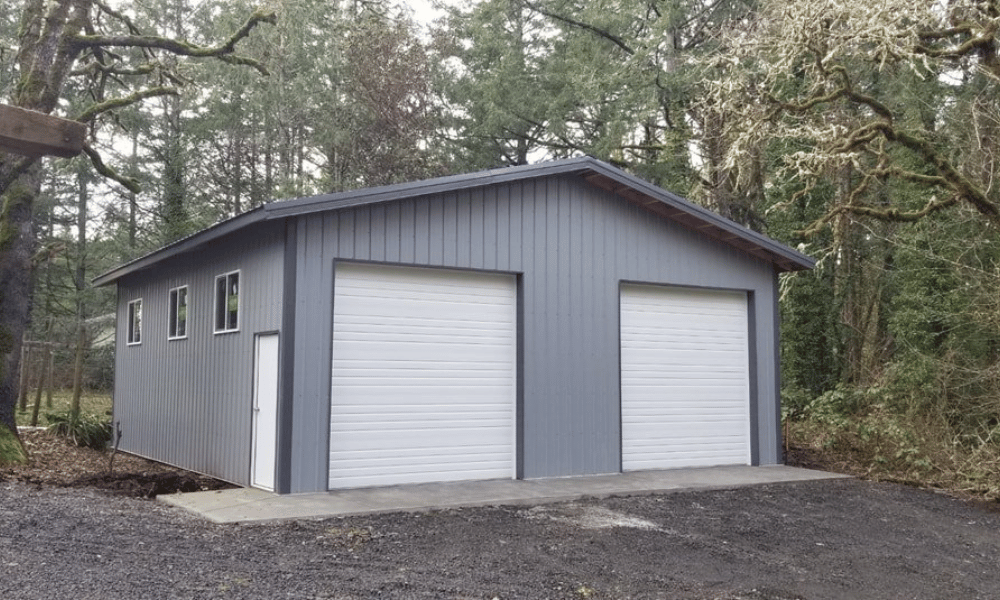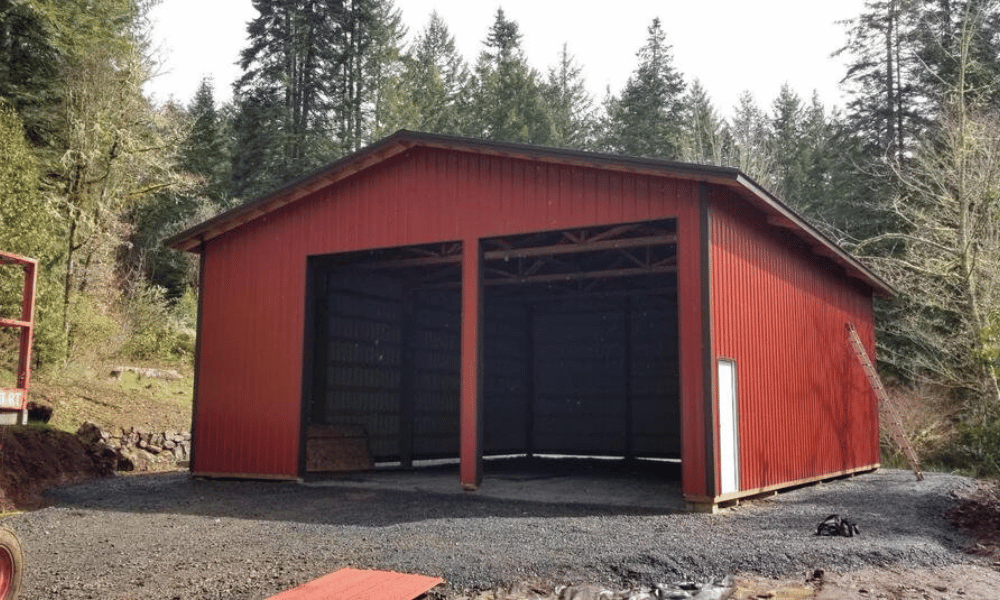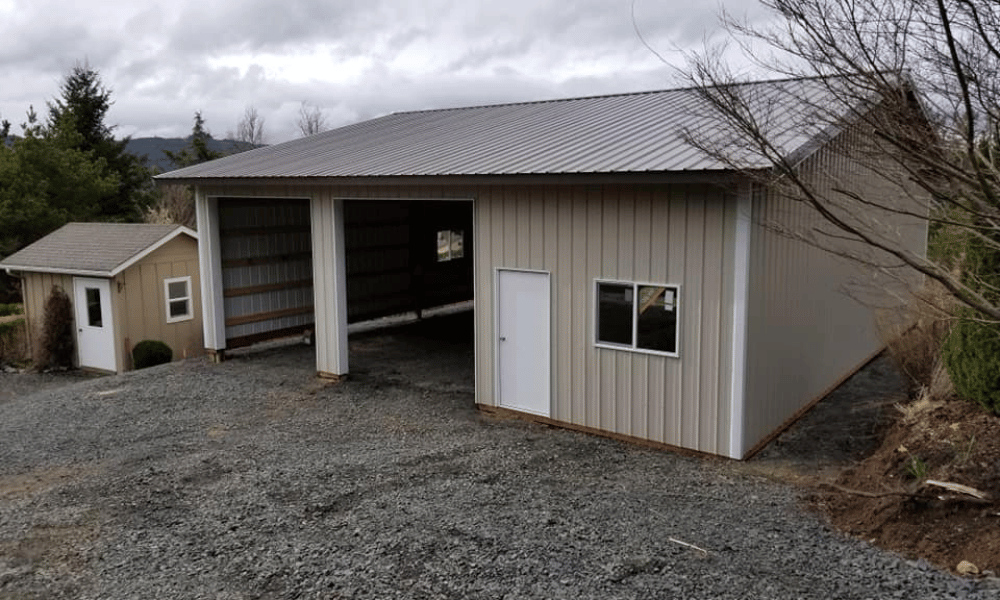Introduction
When it comes to equipping your farm with the right structures, few choices are as crucial as selecting the appropriate pole building. Whether you're looking to store equipment, shelter livestock, or create a workshop, understanding how to choose the right size pole building for your farm can make all the difference in functionality and efficiency. Not only do pole buildings offer versatility and cost-effectiveness, but they also provide durability and ease of construction.
In this comprehensive guide, we will explore various factors that influence your decision-making process regarding pole buildings. From assessing your needs based on farming operations to understanding local zoning laws, we’ll cover it all. So grab a cup of coffee—let’s dive into the world of pole buildings!
Understanding Pole Buildings
What Are Pole Buildings?
Pole buildings are structures that utilize poles or columns set in concrete footings to support the roof and walls. This construction method allows for large open spaces without interior columns, making them ideal for agricultural purposes.
Benefits of Using Pole Buildings
Cost-Effective: Compared to traditional building methods, pole buildings often require fewer materials and less labor. Versatile Design: They can be customized to suit various needs—from hay storage to workshops. Quick Construction: The simple design means quicker build times. Durable and Low Maintenance: Designed to withstand harsh weather conditions.Common Uses for Pole Buildings on Farms
- Equipment storage Livestock housing Workshops Grain bins Covered arenas
How to Choose the Right Size Pole Building for Your Farm
Assessing Your Needs
Before you even begin sizing your pole building, it's vital to assess what you'll be using it for. Will it house livestock? Store equipment? Or serve as a workshop? Understanding your specific needs will give you a solid foundation upon which you can base your size requirements.
Questions to Consider:
- What type of farming operations do I run? How many animals or how much equipment need shelter? Will I require space for future expansion?
Evaluating Available Space
Once you've identified how you'll use your pole building, it’s time to consider the available land on your farm. Lightly wooded areas may offer natural shade while clear fields provide ample room for expansion later.
Tips for Evaluating Space:
Measure existing structures. Identify any potential obstacles (trees, slopes). Consider access points for vehicles and machinery.Local Zoning Regulations
Did you know that local zoning laws can dictate the size and placement of pole buildings? Before proceeding with any design plans, check with local authorities about setbacks and height restrictions.
Questions You Should Ask:
- What are my local zoning regulations? Are there permits required for constructing a pole building?
Choosing Dimensions
Width vs Length: What Matters More?
When deciding on dimensions for your pole building, it’s essential to strike a balance between width and length based on its intended purpose.
General Guidelines:
- Equipment storage typically requires wider openings. Livestock housing might necessitate longer designs for proper airflow.
Height Requirements
The height of your structure is equally important—especially if you're storing tall equipment or housing large animals.
Recommendations:
- For hay storage, consider at least 12 feet high. Workshops may require lower ceilings but should still accommodate shelving above head-height.
Future Expansion Plans
Planning Ahead
If you foresee needing more space in the future, it's wise to incorporate that into your initial design plan rather than trying to retrofit later.
Tips:
Consider modular designs that allow easy additions. Plan infrastructure like electrical wiring accordingly.Cost Implications
While planning for growth is crucial, keep an eye on costs related to larger structures—bigger isn’t always better if it overstretches your budget!
Material Selection
Choosing Quality Materials
When constructing a pole building, the choice of materials significantly affects durability and maintenance costs down the line.
Recommended Materials:
Treated lumber or steel poles Metal roofing Insulated panels (for climate control)Cost vs Quality Balance
Don’t skimp on quality! Opting for cheaper materials may save you money initially but could lead to higher expenses later due to repairs or replacements.
Roof Design Options
Gable vs Shed Roofs
Your roof design affects not just aesthetics but also functionality regarding drainage and snow load capacity.
Overview:
- Gable roofs provide better ventilation. Shed roofs are simpler but may not handle snow as well.
Roof Pitch Considerations
A steeper pitch helps shed snow but may complicate construction—find a balance that works best with your climate!
Ventilation Needs
Importance of Ventilation
Adequate ventilation is crucial in maintaining a healthy environment inside any agricultural structure; it prevents moisture buildup which can lead to mold growth or animal health issues.
Solutions:
Ridge vents Sidewall vents Fans (for larger buildings)Insulation Requirements
Do You Need Insulation?
Depending on what you plan to store or house within your pole building, insulation may be necessary—especially in extreme climates where temperature fluctuations affect livestock comfort or equipment preservation.
Types of Insulation:
Foam board Fiberglass batts Spray foamAccess Points
Doors and Windows Layout
Well-planned access points enhance functionality by allowing easy movement within and outside your pole building without hindering workflow processes.
Recommendations:
Large sliding doors (for equipment) Standard entry doors (for personnel) Windows (for natural light)Electrical Setup Needs
Power Supply Considerations
Assess whether you’ll need electricity within your new structure—this often includes lighting as well as outlets for powering tools or machinery.
Electrical Planning Tips:
Determine power needs early on. Consult an electrician familiar with agricultural setups.Water Supply Options
Water Access
If you’re housing livestock or maintaining certain crops https://www.deanlindseyconstruction.com/pole-barn-carports-and-awnings indoors, establishing a water supply might be essential upfront rather than retrofitting later!
Possible Solutions:
Rainwater collection systems Well connections Municipal water lines (if available)Budgeting Your Project
Overall Cost Assessment
It’s easy to underestimate costs when planning such projects; therefore keeping track throughout each phase ensures no surprises arise later!
| Cost Element | Estimated Amount | |----------------------|------------------| | Materials | $10-$50/sq ft | | Labor | $25-$100/hr | | Permits | Varies | | Utilities Installation| $500-$2000 |
Finding Qualified Contractors
Hiring Professionals
Once you have everything mapped out—the next step is finding contractors who specialize in erecting these types of buildings effectively!
Checklist When Hiring Contractors:
1) Verify credentials & experience 2) Request references from past projects 3) Ensure they understand agricultural nuances
Maintenance Tips After Construction
Even after putting up an impressive structure like this—the work doesn’t end there! Regular upkeep prolongs its lifespan significantly!

- Here are some maintenance tips: Inspect roofs annually Clean gutters regularly Check wooden poles every few years
FAQs About Choosing Pole Buildings
Q: What is a typical size range for a pole barn?
A: Sizes vary widely depending on use; however standard widths range from 24’–60’, while lengths can stretch over 100’.
Q: Can I build my own pole barn?
A: Yes! Many choose DIY routes though consulting professionals ensures structural integrity & compliance with regulations!
Q: How much does it cost per square foot?

Q: How long will my pole barn last?
A: With proper care & quality materials usage; expect lifespan estimates around 30 years minimum!
Q: Are permits needed before starting construction?
A: It varies by location so checking local codes beforehand saves potential headaches down-the-line!

Q: Is insulation necessary in all cases?
A: Not necessarily—but essential if extreme temperatures impact either stored items’ integrity/animal welfare!
Conclusion
Choosing the right size pole building for your farm isn't merely about dimensions; it's about understanding your unique needs while considering future growth opportunities too! By carefully assessing factors such as available space utilization plans along with material selection—you'll set yourself up not just now—but far ahead into future endeavors too! Remember—the goal here isn’t just constructing another structure—it’s creating lasting value within every single project undertaken across those vast acres filled with potential waiting patiently beneath each rising sun!